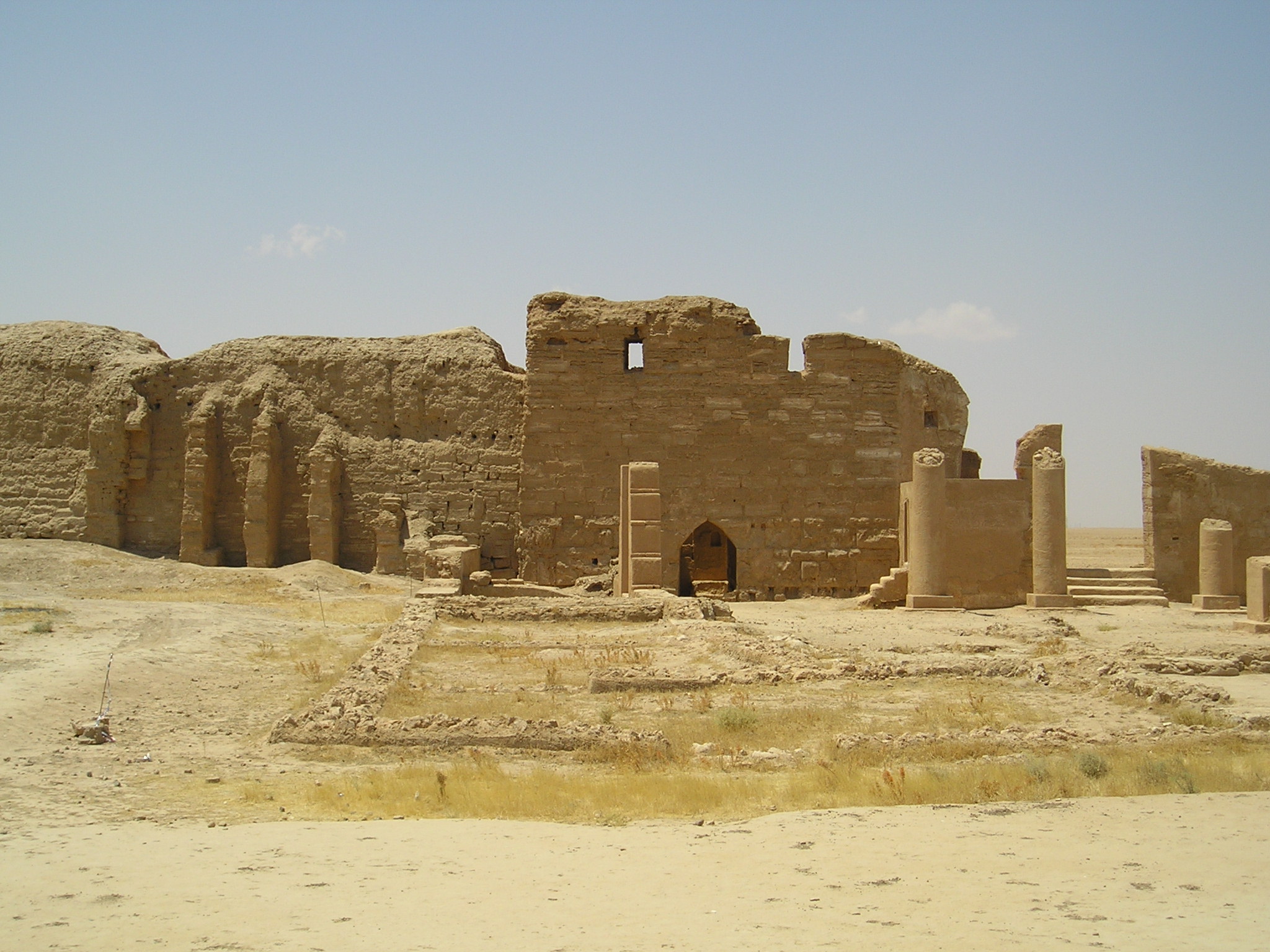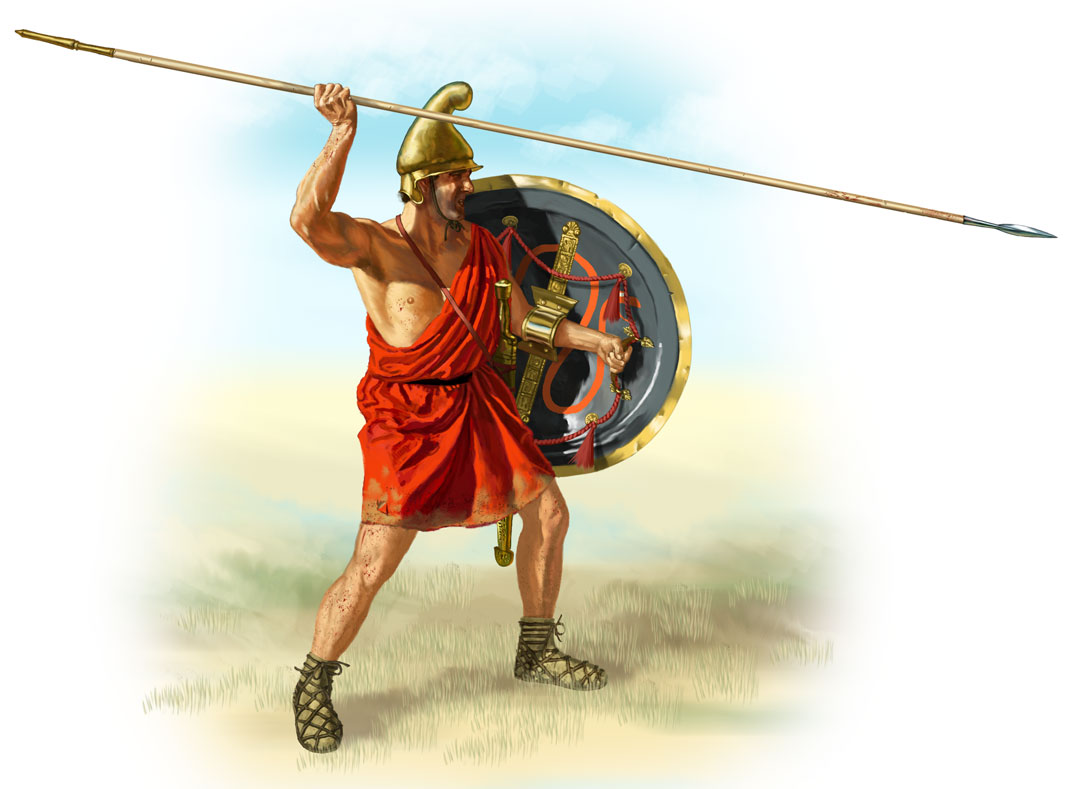|
Dura-Europos
Dura-Europos, ; la, Dūra Eurōpus, ( el, Δούρα Ευρωπός, Doúra Evropós, ) was a Hellenistic, Parthian, and Roman border city built on an escarpment above the southwestern bank of the Euphrates river. It is located near the village of Salhiyé, in present-day Syria. Dura-Europos was founded around 300 BC by Seleucus I Nicator, who founded the Seleucid Empire as one of the Diadochi of Alexander the Great. In 113 BC, Parthians conquered the city, and held it, with one brief Roman intermission (114 AD), until 165 AD. Under Parthian rule, it became an important provincial administrative centre. The Romans decisively captured Dura-Europos in 165 AD and greatly enlarged it as their easternmost stronghold in Mesopotamia, until it was captured by the Sasanian Empire after a siege in 256–57 AD. Its population was deported, and the abandoned city eventually became covered by sand and mud and disappeared from sight. Dura-Europos is of extreme archaeological impor ... [...More Info...] [...Related Items...] OR: [Wikipedia] [Google] [Baidu] |
Siege Of Dura Europos (256)
The siege of Dura Europos took place when the Sasanians under Shapur I besieged the Roman city of Dura-Europos in 256 after capturing Antioch. Dura-Europos was an important trading center in Roman Syria. It may or may not be the same as the "Doura" recorded in Shapur I's inscriptions. The town was in Sasanian hands for some time after its fall, and was later abandoned. Intact archaeological evidences at Dura provide details of the Roman presence there, and the dramatic course of the siege. The garrison was determined to resist the siege, and the Sasanians employed a variety of siege warfare techniques to defeat them. Archaeological evidences suggest that the garrison at Dura-Europos was mixed, composed of Cohors XX Palmyrenorum (which is known more than the others), vexillations from Legio IV Scythica Valeriana Galliena, III Cyrenaica, XVI Flavia Firma, and other cohorts, including Cohors II Paphlagonum Galliana Volusiana and possibly Cohors II Equestris. The relationship bet ... [...More Info...] [...Related Items...] OR: [Wikipedia] [Google] [Baidu] |
Temple Of Bel, Dura-Europos
The Temple of Bel, also known as the Temple of the Palmyrene gods, was located in Dura Europos, an ancient city on the Euphrates, in modern Syria. The temple was established in the first century BC and is celebrated primarily for its wall paintings. Despite the modern names of the structure, it is uncertain which gods were worshipped in the structure. Under Roman rule, the temple was dedicated to the Emperor Alexander Severus. In that period, the temple was located within the military camp of the XXth Palmyrene cohort. Under Roman rule, the temple was dedicated to the Emperor Alexander Severus. In that period, the temple was located within the military camp of the XXth Palmyrene cohort. Discovery The temple's paintings were discovered in 1920 by M. C. Murphy. Photos of them reached James Henry Breasted, who studied both the paintings and the temple and would publish a monograph about them in 1924. Before Murphy's discovery, the site was unknown. Its identification with the ... [...More Info...] [...Related Items...] OR: [Wikipedia] [Google] [Baidu] |
Clark Hopkins
Clark Hopkins (New York City, 16 September 1895 – 1976) was an American archaeologist. During the 1930s he led the joint French-American excavations at Dura Europos. In later years he was professor of art and archeology at the University of Michigan. Biography Clark Hopkins was a son of Edward Washburn Hopkins, who was a Professor of Sanskrit and Comparative Philology at Yale University. Hopkins studied at Yale (A.B., 1917), Oxford (Rhodes Scholar, 1919-1921; A.B., 1921 and A.M., 1926) and the University of Wisconsin (Ph.D., 1924). In 1926 Clark Hopkins married the archaeologist Susan M. Hopkins and they moved New Haven, CT. In the summer of 1928 both Susan and Clark Hopkins attended the summer schools of the American Academy in Rome and the American School of Classical Studies at Athens, and afterwards joined an excavation at Olynthus. He taught at Rice Institute, Yale and the University of Michigan. He studied at Athens in 1927-1928, and in 1928-1929 was an Assistant Dir ... [...More Info...] [...Related Items...] OR: [Wikipedia] [Google] [Baidu] |
Seleucus Nikator
Seleucus I Nicator (; ; grc-gre, Σέλευκος Νικάτωρ , ) was a Macedonian Greek general who was an officer and successor ( ''diadochus'') of Alexander the Great. Seleucus was the founder of the eponymous Seleucid Empire. In the power struggles that followed Alexander's death, Seleucus rose from being a secondary player to becoming total ruler of Asia Minor, Syria, Mesopotamia, and the Iranian Plateau, eventually assuming the title of '' basileus'' (king). The state he established on these territories, the Seleucid Empire, was one of the major powers of the Hellenistic world, until being overcome by the Roman Republic and Parthian Empire in the late second and early first centuries BC. After the death of Alexander in June 323 BC, Seleucus initially supported Perdiccas, the regent of Alexander's empire, and was appointed Commander of the Companions and chiliarch at the Partition of Babylon in 323 BC. However, after the outbreak of the Wars of the Diadochi in 322, ... [...More Info...] [...Related Items...] OR: [Wikipedia] [Google] [Baidu] |
Parthian Empire
The Parthian Empire (), also known as the Arsacid Empire (), was a major Iranian political and cultural power in ancient Iran from 247 BC to 224 AD. Its latter name comes from its founder, Arsaces I, who led the Parni tribe in conquering the region of Parthia in Iran's northeast, then a satrapy (province) under Andragoras, who was rebelling against the Seleucid Empire. Mithridates I (r. c. 171–132 BC) greatly expanded the empire by seizing Media and Mesopotamia from the Seleucids. At its height, the Parthian Empire stretched from the northern reaches of the Euphrates, in what is now central-eastern Turkey, to present-day Afghanistan and western Pakistan. The empire, located on the Silk Road trade route between the Roman Empire in the Mediterranean Basin and the Han dynasty of China, became a center of trade and commerce. The Parthians largely adopted the art, architecture, religious beliefs, and royal insignia of their culturally heterogeneous em ... [...More Info...] [...Related Items...] OR: [Wikipedia] [Google] [Baidu] |
Michael Rostovtzeff
Mikhail Ivanovich Rostovtzeff, or Rostovtsev (russian: Михаи́л Ива́нович Росто́вцев; – October 20, 1952), was a Russian historian whose career straddled the 19th and 20th centuries and who produced important works on ancient Roman and Greek history. He was a member of the Russian Academy of Science. Career Rostovtzeff was the son of a Latin teacher. Upon completing his studies at the universities of Kiev and , Rostovtsev served as an assistant and then as a full Professor of Latin at the 1898–1918. In 1918, following the Russian Revolution, he emigrated first to Sweden, then to England, and finally in 1920 to the United States. There he accepted a chair at the University of Wisconsin–Madison before moving to Yale University in 1925 where he taught until his retirement in 1944. He oversaw all archaeological activities of the latter institution in general and the excavations of Dura-Europos in particular. He is believed to have coined the term " ... [...More Info...] [...Related Items...] OR: [Wikipedia] [Google] [Baidu] |
Syrian Desert
The Syrian Desert ( ar, بادية الشام ''Bādiyat Ash-Shām''), also known as the North Arabian Desert, the Jordanian steppe, or the Badiya, is a region of desert, semi-desert and steppe covering of the Middle East, including parts of southern Syria, eastern Jordan, northern Saudi Arabia, and western Iraq. It accounts for 85% of the land area of Jordan and 55% of Syria. To the south it borders and merges into the Arabian Desert. The land is open, rocky or gravelly desert pavement, cut with occasional wadis. Location and name The desert is bounded by the Orontes Valley and the volcanic field of Harrat al-Shamah to the west, and by the Euphrates to the east. In the north, the desert gives way to the more fertile areas and to the south it runs into the deserts of the Arabian Peninsula. Some sources equate the Syrian Desert with the ''"Hamad Desert"'' while others limit the name ''Hamad'' to the southern central plateau. A few consider the Hamad to be the whole reg ... [...More Info...] [...Related Items...] OR: [Wikipedia] [Google] [Baidu] |
Al-Salihiyah, Deir Ez-Zor Governorate
Al-Salihiyah ( ar, الصالحية; also spelled Salhiyé) is a town in eastern Syria, administratively part of the Deir ez-Zor Governorate, located on the western bank of the Euphrates River, south of Deir ez-Zor. Nearby localities include al-Asharah, Mayadin and al-Muhasan to the north and Hajin and al-Jalaa to the south. According to the Syria Central Bureau of Statistics, al-Salihiyah had a population of 4,471 in the 2004 census.General Census of Population and Housing 2004 Syria Central Bureau of Statistics (CBS). Deir az-Zawr Governorate. The village is located just next to the s ... [...More Info...] [...Related Items...] OR: [Wikipedia] [Google] [Baidu] |
Hellenistic
In Classical antiquity, the Hellenistic period covers the time in Mediterranean history after Classical Greece, between the death of Alexander the Great in 323 BC and the emergence of the Roman Empire, as signified by the Battle of Actium in 31 BC and the conquest of Ptolemaic Egypt the following year. The Ancient Greek word ''Hellas'' (, ''Hellás'') was gradually recognized as the name for Greece, from which the word ''Hellenistic'' was derived. "Hellenistic" is distinguished from "Hellenic" in that the latter refers to Greece itself, while the former encompasses all ancient territories under Greek influence, in particular the East after the conquests of Alexander the Great. After the Macedonian invasion of the Achaemenid Empire in 330 BC and its disintegration shortly after, the Hellenistic kingdoms were established throughout south-west Asia (Seleucid Empire, Kingdom of Pergamon), north-east Africa ( Ptolemaic Kingdom) and South Asia (Greco-Bactrian Kingdom, Indo ... [...More Info...] [...Related Items...] OR: [Wikipedia] [Google] [Baidu] |
Destruction Of Cultural Heritage By The Islamic State
Deliberate destruction and theft of cultural heritage has been conducted by the Islamic State since 2014 in Iraq, Syria, and to a lesser extent in Libya. The destruction targets various places of worship under ISIL control and ancient historical artifacts. In Iraq, between the fall of Mosul in June 2014 and February 2015, IS had plundered and destroyed at least 28 historical religious buildings. Valuable items from some buildings were looted in order to smuggle and sell them to foreigners to finance the running of the Islamic State. By March 2019, IS had lost most of its territory in the Middle East. Motivation IS justifies the destruction of cultural heritage sites by its Salafism, which, according to its followers, places "great importance on establishing tawhid (monotheism)", and "eliminating shirk (polytheism)". Thus there is an ideological underpinning to their destruction of historical and cultural heritage sites. IS views its actions in sites like Palmyra and Nimrud ... [...More Info...] [...Related Items...] OR: [Wikipedia] [Google] [Baidu] |
Franz Cumont
__NOTOC__ Franz-Valéry-Marie Cumont (3 January 1868 in Aalst, Belgium – 20 August 1947 in Woluwe-Saint-Pierre near Brussels) was a Belgian archaeologist and historian, a philologist and student of epigraphy, who brought these often isolated specialties to bear on the syncretic mystery religions of Late Antiquity, notably Mithraism. Biography Cumont was a graduate of the University of Ghent (PhD, 1887). After receiving royal travelling fellowships, he undertook archaeology in Pontus and Armenia (published in 1906) and in Syria, but he is best known for his studies on the impact of Eastern mystery religions, particularly Mithraism, on the Roman Empire. Cumont's international credentials were brilliant, but his public circumspection was not enough. In 1910, Baron Edouard Descamps, the Catholic Minister of Sciences and Arts at the University of Ghent, refused to approve the faculty's unanimous recommendation of Cumont for the chair in Roman History, Cumont having been a profes ... [...More Info...] [...Related Items...] OR: [Wikipedia] [Google] [Baidu] |



%2C_Nisa_mint.jpg)


